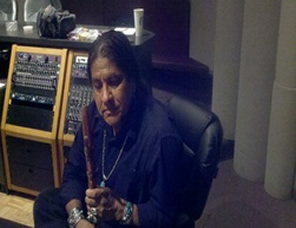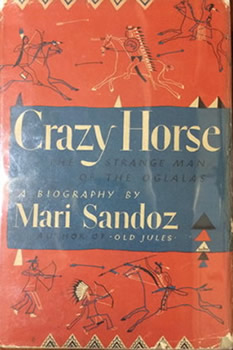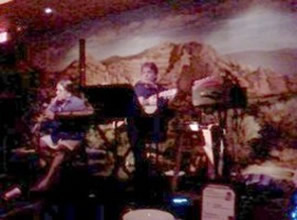The Lakota Connection
Much has been made about the life and legacy of Crazy Horse. Born into the Oglala Sioux tribe in the Winter of 1842, he rose to lead his people in their epic struggle against the never ending surge of settlers, and the multitude of Union Soldiers that were entrusted to protect them.
One of the best books ever written about the life of Crazy Horse is by Mari Sandoz (1900-1966). Titled "Crazy Horse, strange man of the Oglala's", it tells the story from the perspective of a person who had the luxury of hearing first hand, stories of tribal history by the many Sioux Indians who hunted with young Mari's father in the Niobrara Valley at the turn of the century. There were many things that made Crazy Horse stand out from the rest of his brothers and sisters. He was slight of build, maybe 5'8" or 5'9", had curly brown hair, and a light complexion for a full blooded Oglala. In fact, his childhood name was 'Curly'.
Not one to partake in dancing or singing in the fashion of most males of his tribe, he never boasted about his deeds of bravery around the lodge fires after succesful hunting trips or war party raids, though there was not another warrior more fearless or cunning when it came time for battle. His heroic deeds were legendary throughout the Sioux Nation.
Only adding to all of this was the fact that there was never a recorded picture of his likeness taken by anyone. There is one photo making the rounds of various internet sites and publications, but most historians agree that this is most likely not Crazy Horse at all.
At the time of his death at Camp Robinson, September 5th, 1877, the Sioux Nation had been reduced to a fraction of it's size and magnitude, being forced to a reservation on the Missouri river.
The Oglala name for Crazy Horse is 'Tasunke Witko'. Sunke means 'dog', and 'Tasunke' means large dog which is Lakota for Horse. 'Witko' means crazy, but as some Sioux have said; not in the 'insane' sense of the word, but more like 'enchanted' or 'mystical'.
In 1939 Chief Standing Bear wrote sculpter Korczak Ziolkowski and asked if he would create a lasting stone image to honor one of their great 'Heroes', like the faces that were taking shape on nearby Mt. Rushmore. In 1949 actual work was started using no Government tax money, only private donations and grants. Some sixty years later, the work continues, with the help of Korczak's family.
You can find out all the details concerning the 'Crazy Horse Memorial', located some seventeen miles S.W. of Mt. Rushmore, by visiting www.crazyhorse.org.


